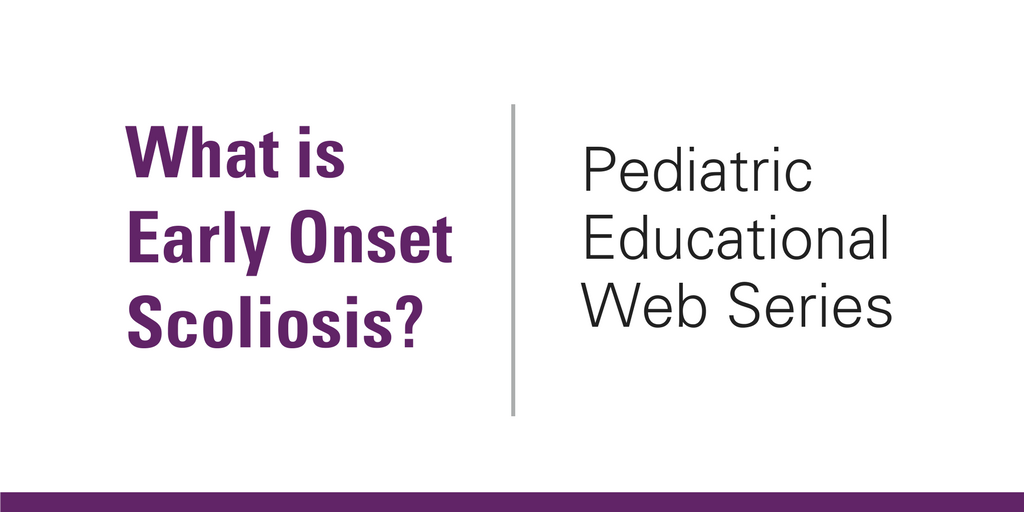
Dr. Greg Mundis, pediatric spine surgeon from Rady Children’s Hospital in San Diego, CA, explains why Early Onset Scoliosis (EOS) is a unique disease affecting children under 10 years old. Early Onset Scoliosis is defined as a curvature of the spine greater than 10 degrees in children from birth to age 10.
To view the full transcript, see below:
JACKIE: Greg, I think a lot of people out there are more familiar with the adolescent scoliosis, but maybe not as familiar with the early-onset population. Can you kind of talk a little bit about the difference between those two?
GREG MUNDIS: Sure. The easiest difference to think about, when I, when I cluster them into groups is to, you know, if they’re over 10 years old, then they’re usually in the adolescent grouping, and if they’re under 10, then they’re in this group we call EOS – or early-onset scoliosis. And usually refers just to young kids with large curves. You have to have a diagnosis of at least of 10 degrees of deformity before you can call it scoliosis, but again, whether you’re diagnosed before the age of 10 or after is really the, the cut-off for that.
JACKIE: Can you tell us a little bit more about early onset scoliosis and how it varies from patient to patient?
MUNDIS: In the early-onset realm, we tend to categorize the scoliosis into four different types. One being syndromic, when the scoliosis is associated with an underlying condition that the child may have. There are many different syndromes that these kids can have that are usually of genetic origin, but some of the subsets of those syndromes can be that the child develops a spinal deformity. The next type is neuromuscular. And a neuromuscular deformity, that means there’s an underlying neurologic condition that leads to some type of – whether it’s muscle imbalance or imbalance of growth, or some type of signal transduction problem between the brain and the limbs — something’s going on that causes an abnormal curvature in the spine as well. The next type is called congenital. This group of kids that have this problem is usually from some type of malformation during the development of the bones themselves. And so they can either develop extra bones, or they can develop bones that are abnormally grown together. And this can happen just at one location, or it can happen just throughout the entire spine. And then the fourth variety is called idiopathic. And this group of kids doesn’t carry another diagnosis with them. So usually this is a child you’d look at and you might say, you know what, let’s get the echo of the heart, let’s check the kidneys, let’s check anything else, maybe some genetics. But we end up not finding an underlying diagnosis. And those kids we end up calling idiopathic. In general we try not to use surgery on these kids until as late as possible. There’s times we’re forced to do it at an early age, but man, if I can get a kid to be 5 or 6 or 7 before we start like, the surgical management of early-onset scoliosis, then I’m gonna be super, super happy. And so you know, that’s generally how I think about it. So one of the things I think we can really focus on is educating families. I think we still don’t do a great job of communicating the message of early-onset scoliosis and what the treatments are to, you know, to families and the kids.